Birth of vessels
From design preparation to commissioning, building a liner or cargo ship is a key project and pivotal event for shipping companies.
Birth of vessels
From design preparation to commissioning, building a liner or cargo ship is a key project and pivotal event for shipping companies.
Shipbuilding yards are places of design, manufacture and assembly where projects for shipping company vessels come to life. Once the order contract is signed and the design plans are approved by the company, construction is started by laying the first metal sheet. In the months to follow, hundreds of shipyard workers assemble components made in their workshops, or from the best industry manufacturers, to create the new ship.
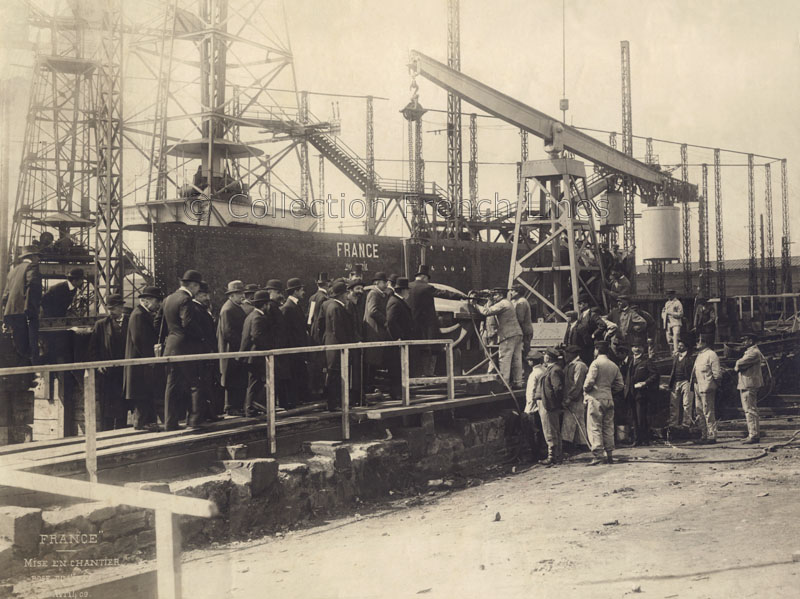
Anonymous. Beginning construction of the liner France (CGT 1912), April 20, 1909
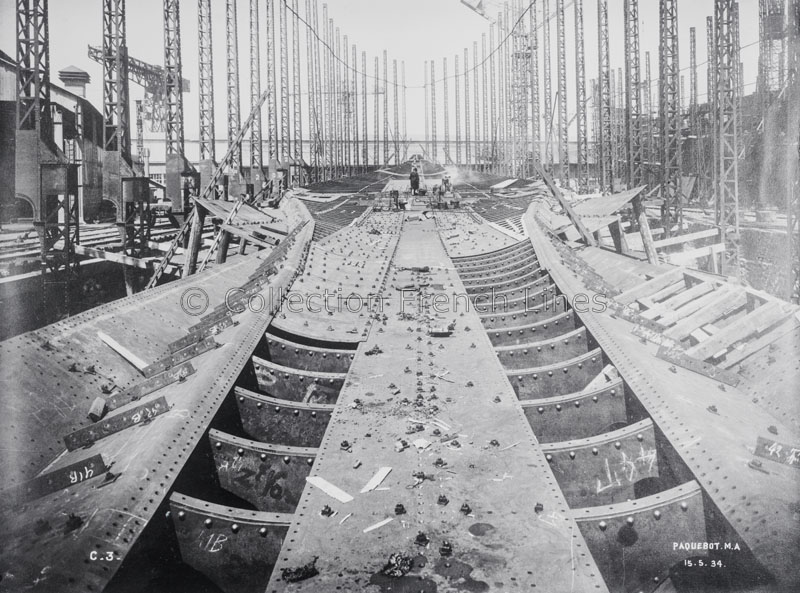
Anonymous. Construction of the liner Ville d’Alger (CGT 1935), 1934
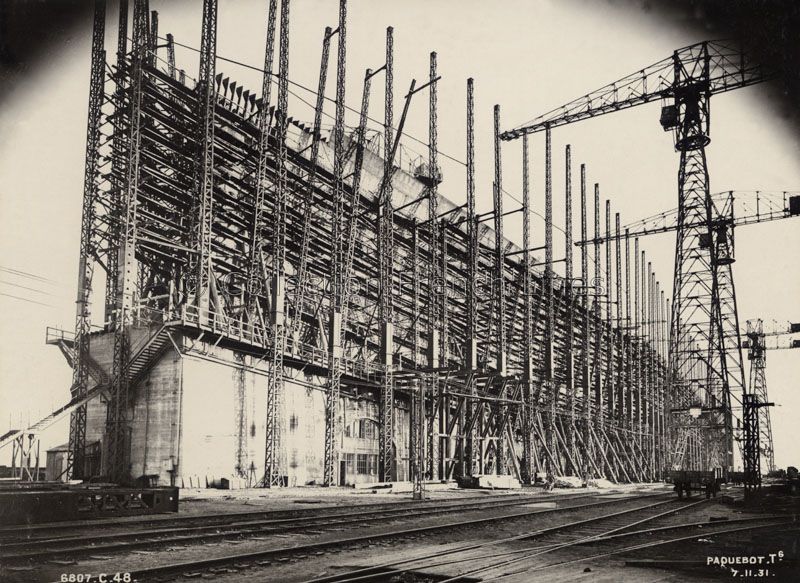
Anonymous. Construction of the liner Normandie (CGT 1935), 1931
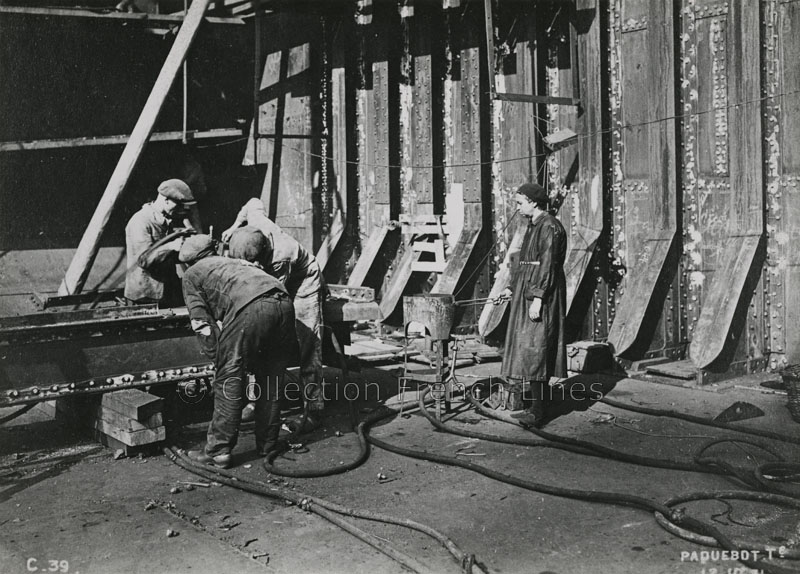
Anonymous. Construction of the liner Normandie (CGT 1935), 1931
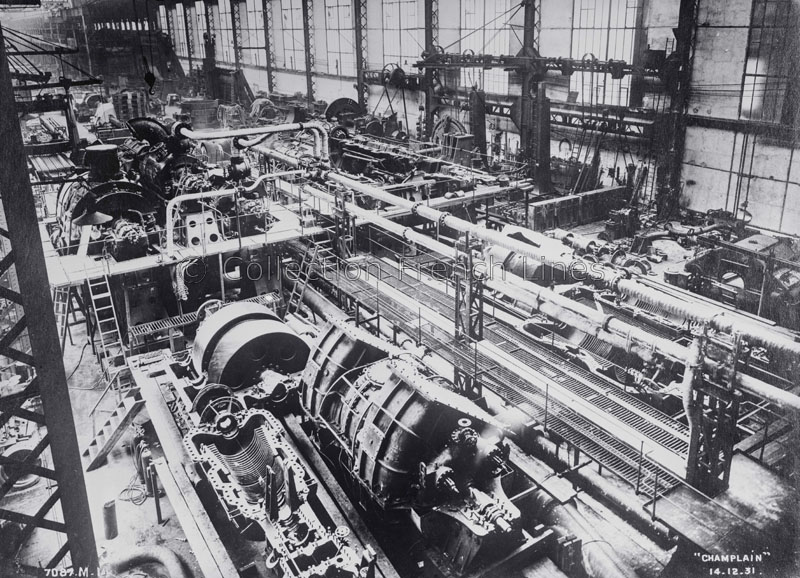
Anonymous. Steam turbines from the liner Champlain (CGT 1932), in the workshop, 1931
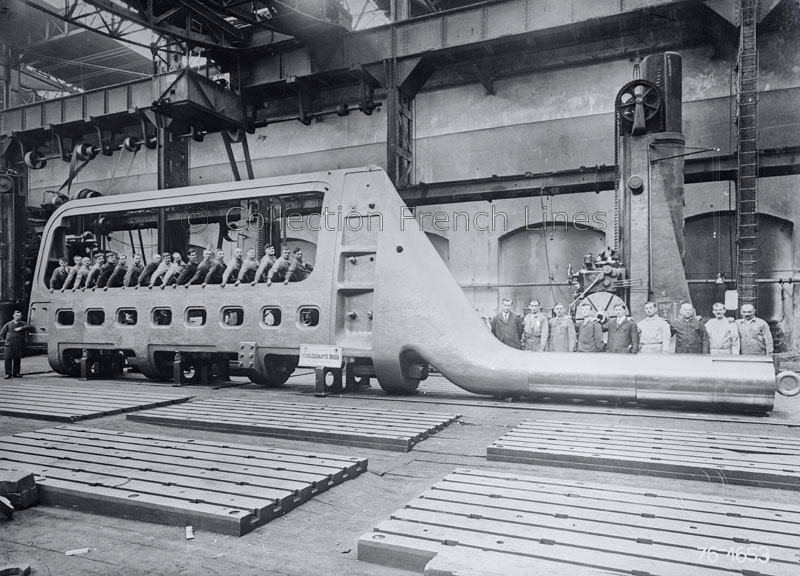
Anonymous. Sternpost weighing 125,000 kg from the liner Normandie (CGT 1935) manufactured by Skoda
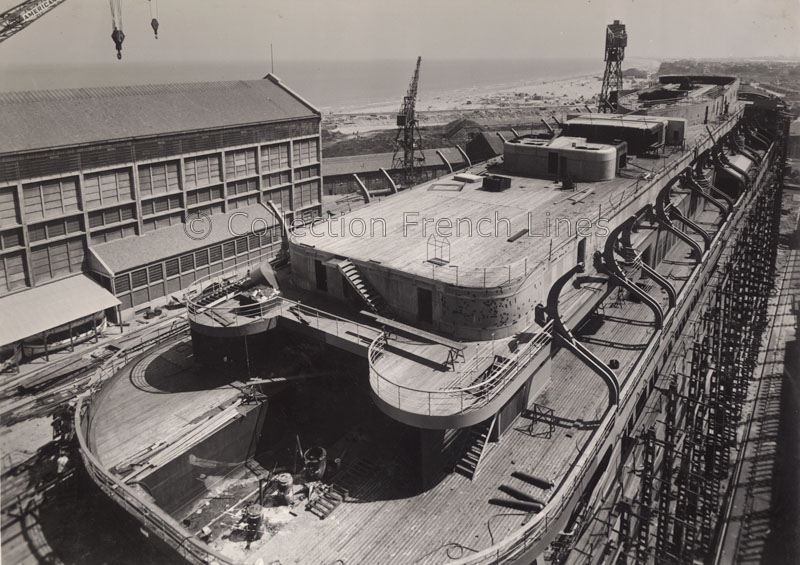
Anonymous. Construction of the liner Flandre (CGT 1952)
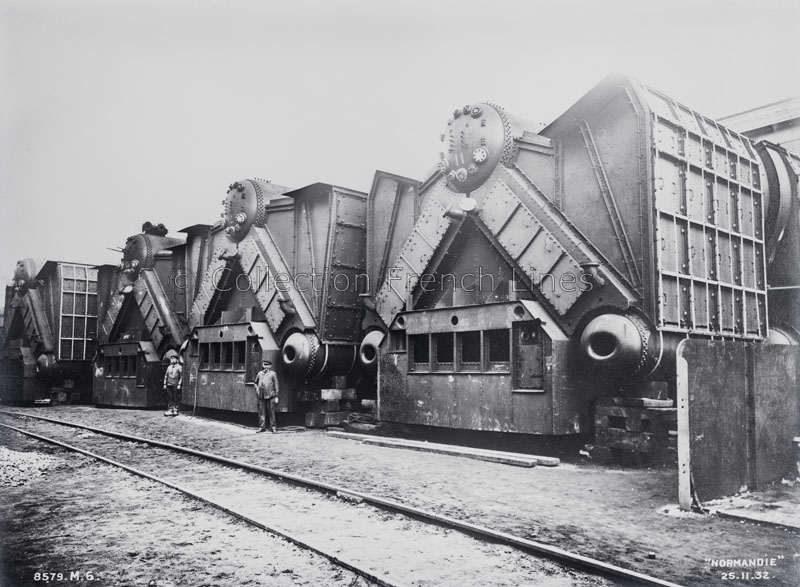
Anonymous. 29 boilers from the liner Normandie (CGT 1935), 1932
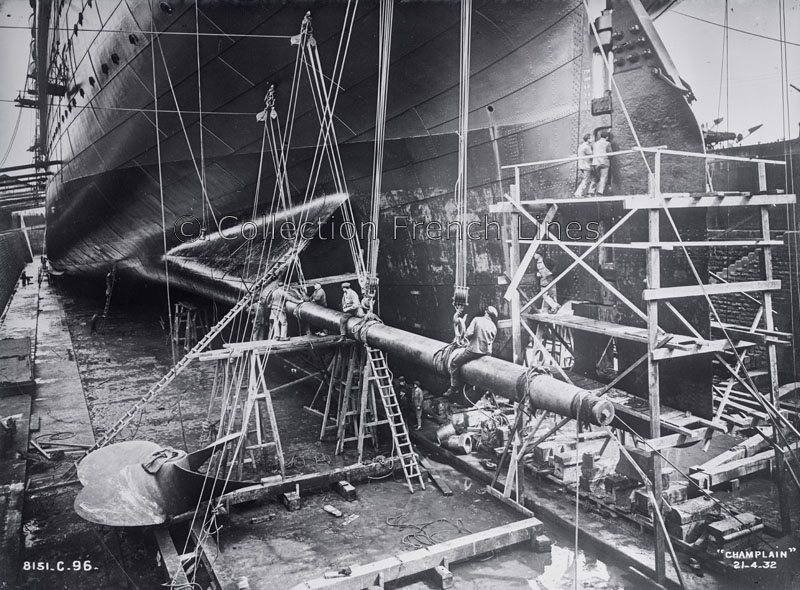
Anonymous. Installing the shaft lines of the liner Champlain (CGT 1932), 1932
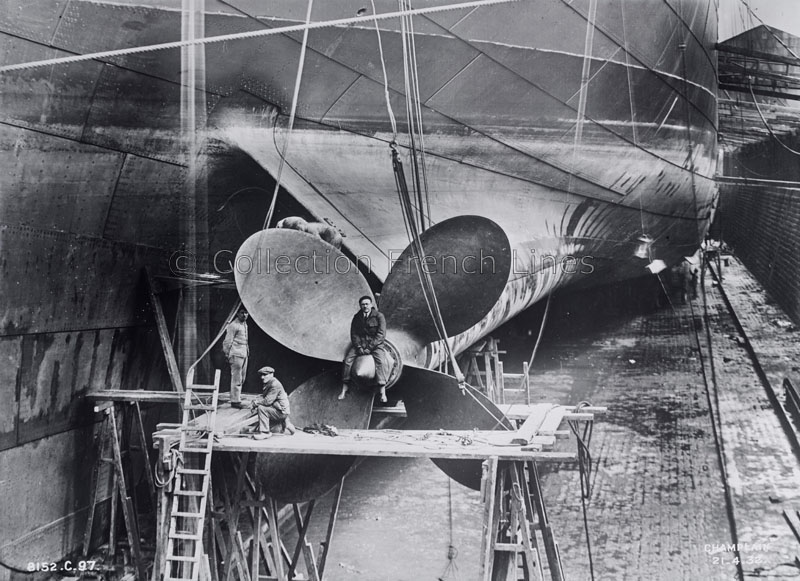
Anonymous. Installing the propellers of the liner Champlain (CGT 1932), 1932
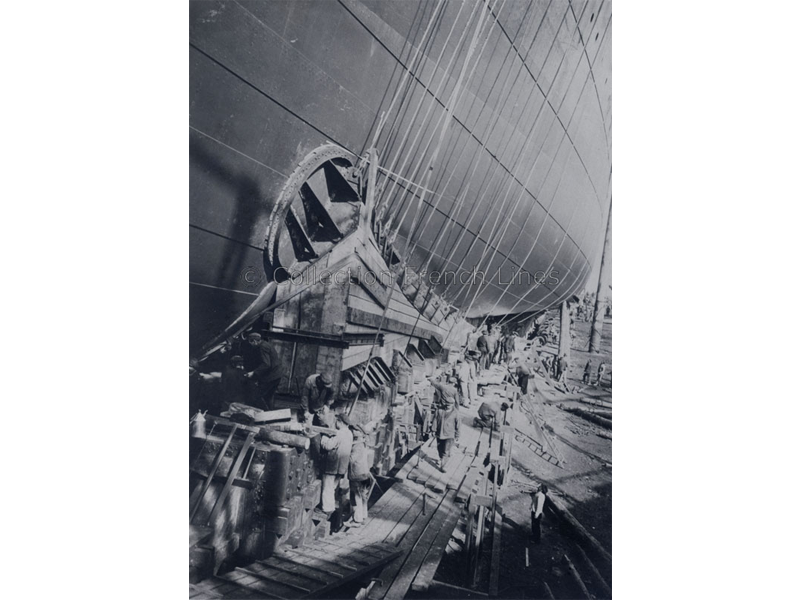
Anonymous. Construction of the liner La Provence (CGT 1906)
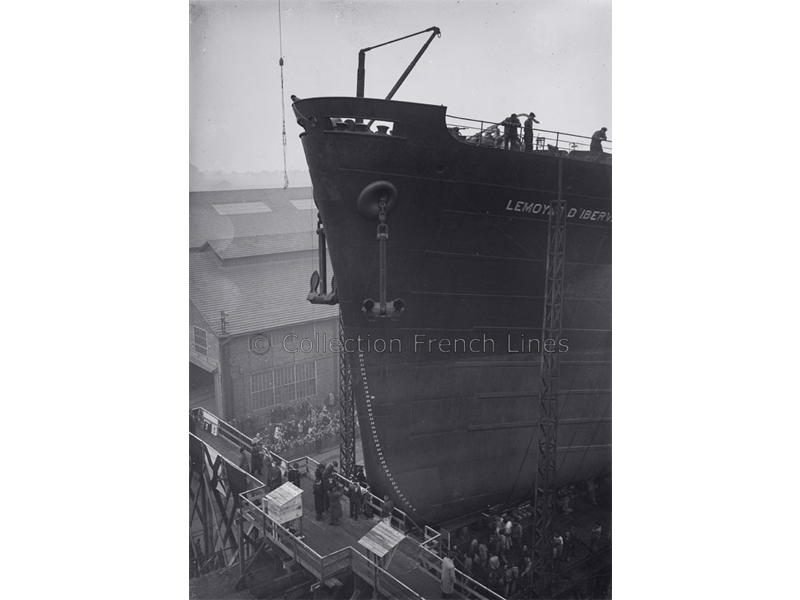
Anonymous. Launch of cargo ship Lemoyne d’Iberville (CGT 1950)
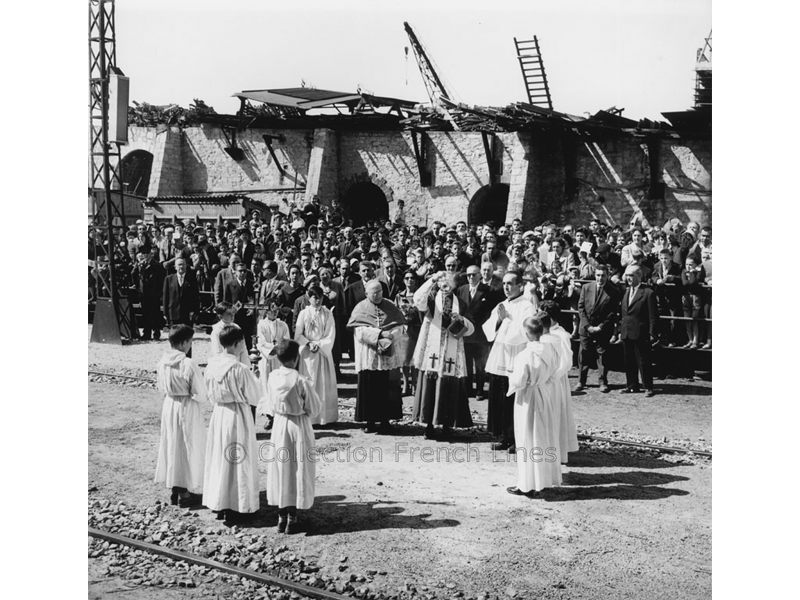
René Simon. Blessing the liner Napoléon (CGT 1959), April 4, 1959
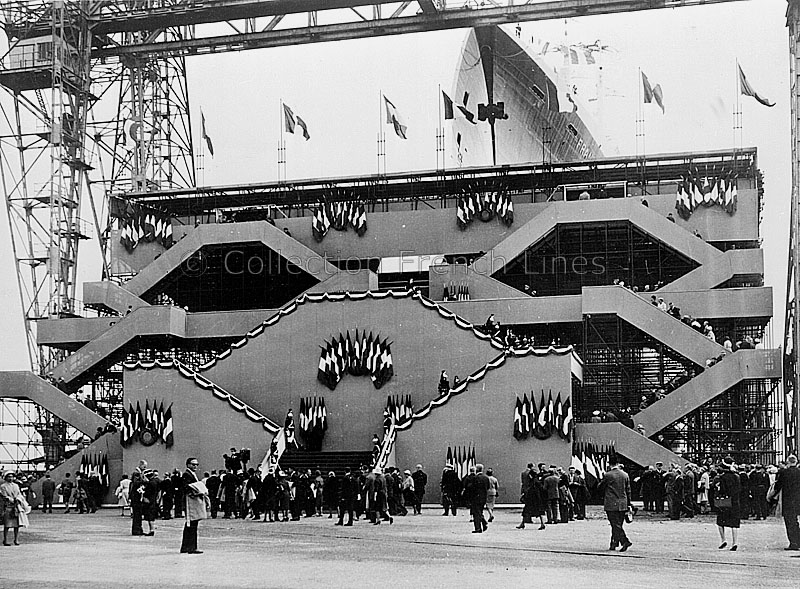
Anonymous. Launch of liner France (CGT 1962), May 11, 1960
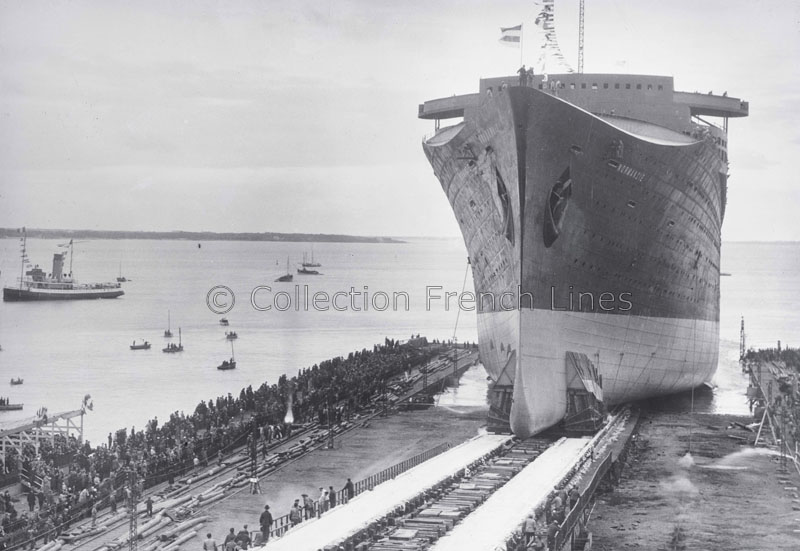
Anonymous. Launch of liner Normandie (CGT 1935), October 29, 1932
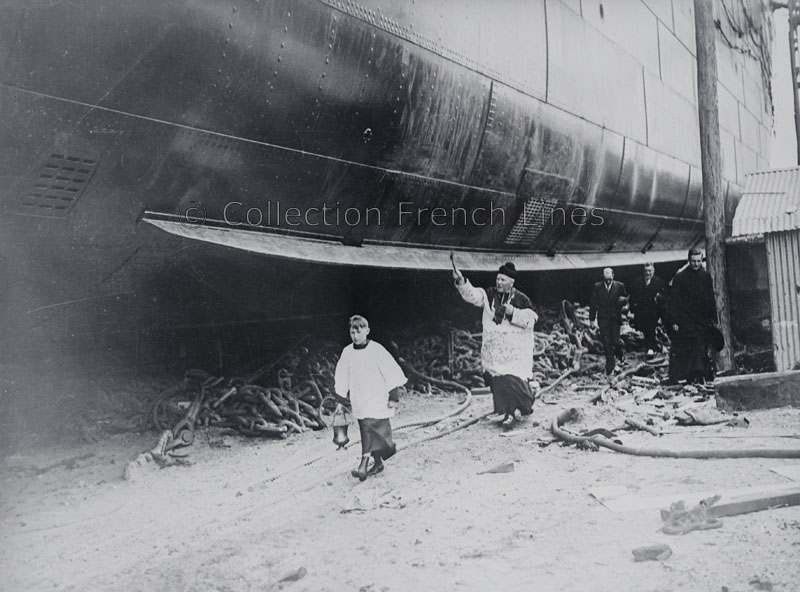
Anonymous. Blessing the liner Colombie (CGT 1931)
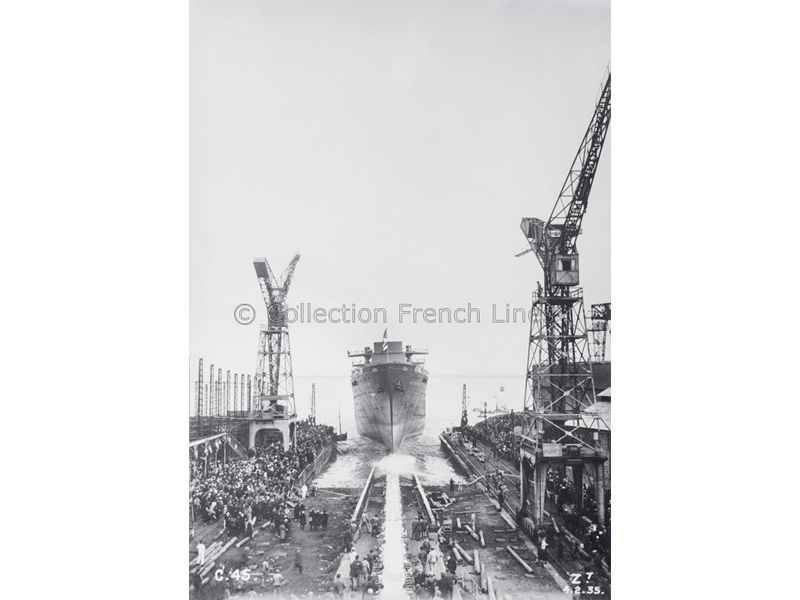
Anonymous. Launch of liner Ville d’Alger (CGT 1935), February 4, 1935
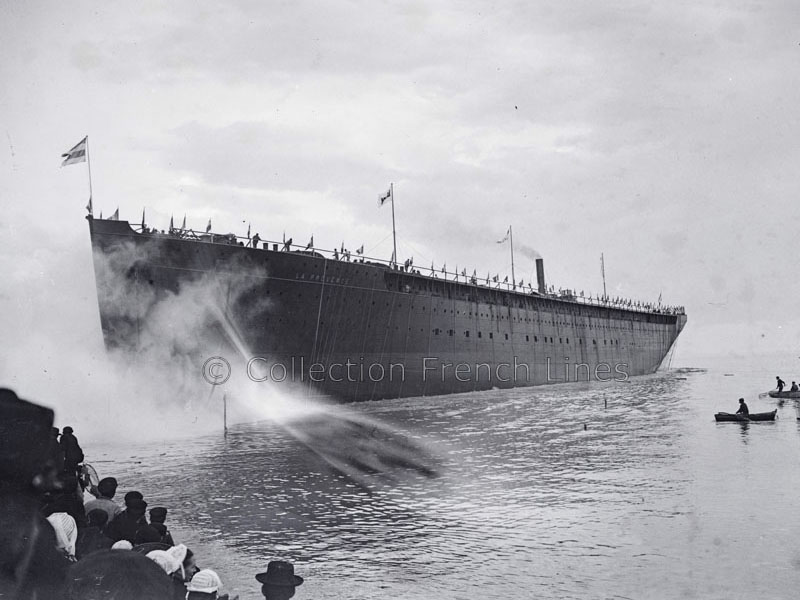
Anonymous. Launch of liner La Provence (CGT 1906), March 21, 1904
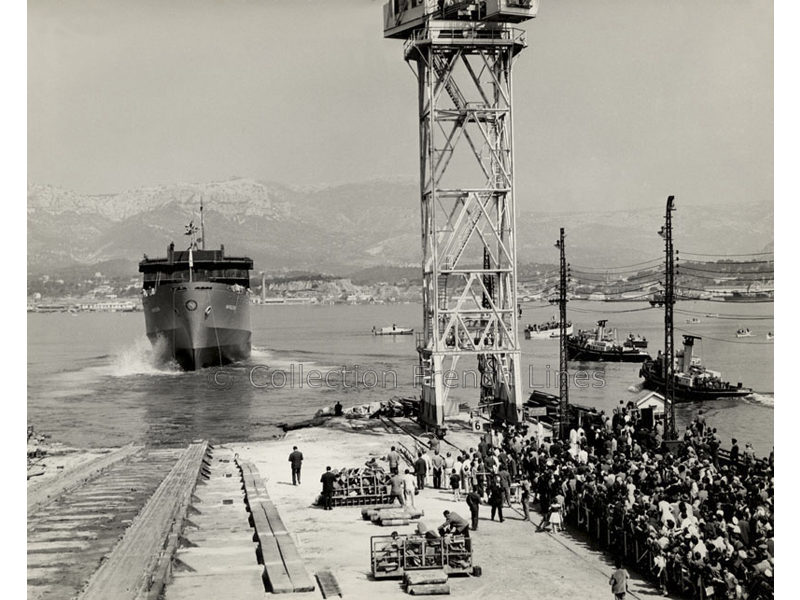
René Simon. Launch of liner Napoléon (CGT 1959), April 4, 1959
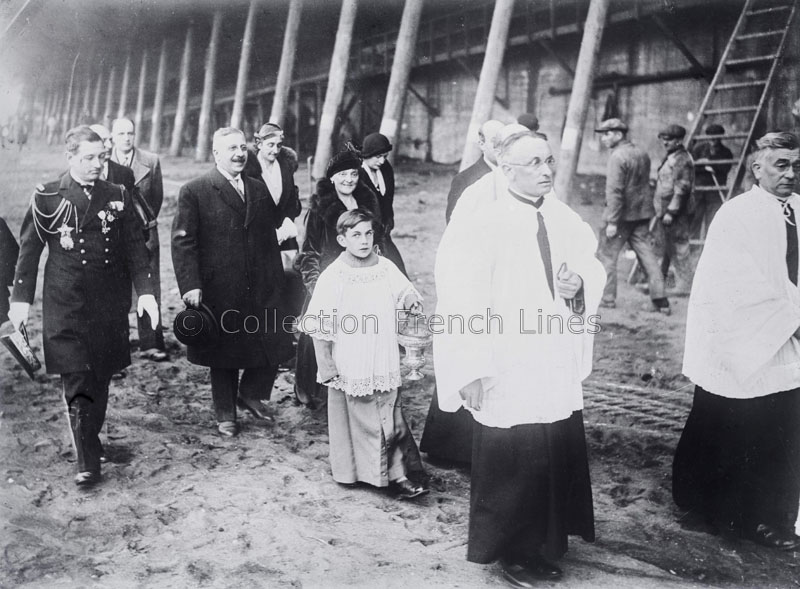
Anonymous. Blessing the liner Normandie (CGT 1935), October 29, 1932
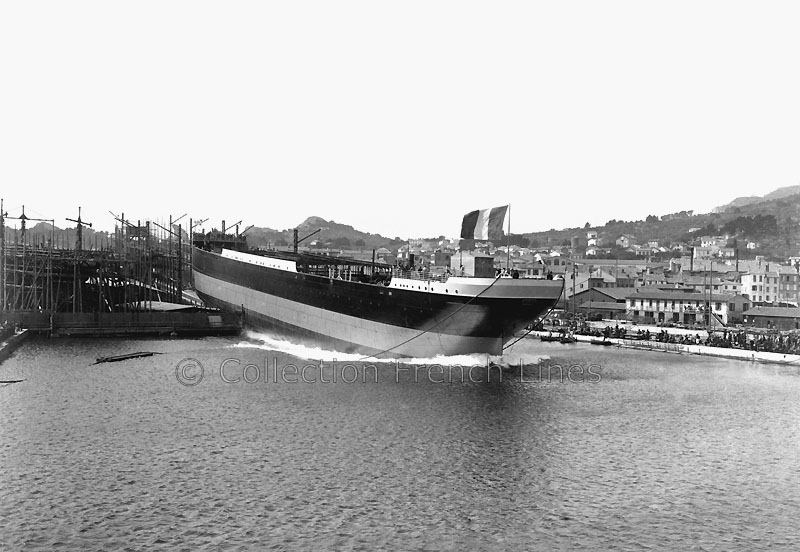
Anonymous. Launch of liner Euphrate (MM 1905), April 24, 1905
Once construction of the hull is complete, the launch ceremony for the vessel is held before a host of personalities invited to the event, with a huge crowd coming to witness the momentous occasion. After the boat is blessed by a clergyman, the godmother performs the christening, symbolized by cutting the ribbon and releasing the bottle of champagne that shatters against the bow. The vessel glides across the slipway and plunges into the sea for the first time, before it is towed to the fitting-out quay to be finished.
Normally the spouses of company executives or politicians are selected to carry out this tradition to ward off bad luck and, more recently, women from the world of art, politics and economics. For more iconic ships, it was customary to ask wives of heads of state, who were in office at the time of the launch, to ensure that this gesture brought good luck. As such, Madame Lebrun accompanied the Normandie on its maiden voyage in 1935 to be presented to the City of New York, where the liner and its passengers were received with full honors. Madame de Gaulle, who christened France in 1960, followed its first crossing during the ship’s maiden voyage to the Canary Islands. However, long before these women, Empress Eugénie sponsored the ship bearing her name in 1864, one of the first transatlantic vessels commissioned by French Line.
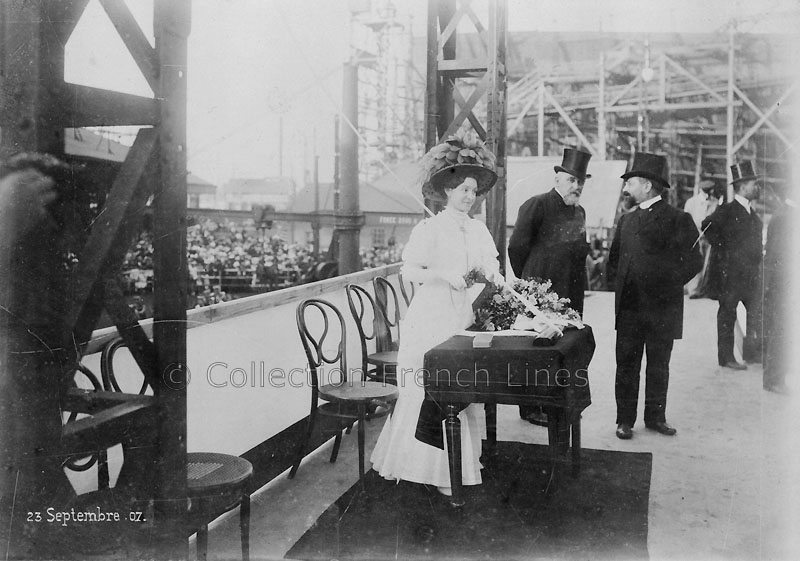
Anonymous. Christening the liner Charles-Roux (CGT 1909), September 23, 1907
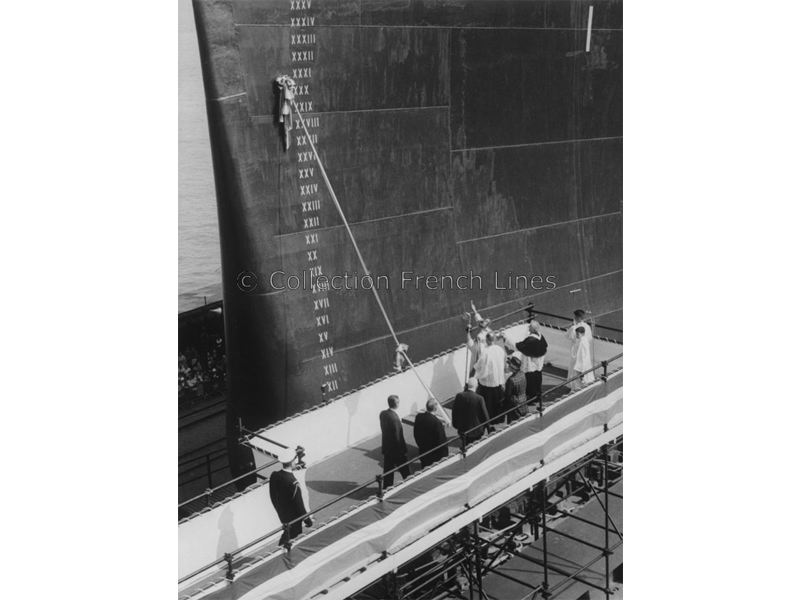
Anonymous. Christening the liner France (CGT 1962), May 11, 1960
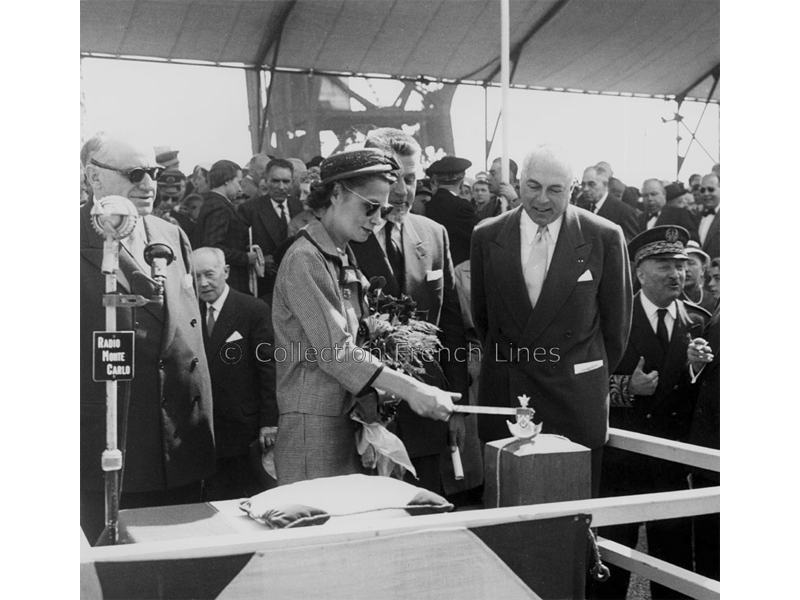
René Simon. Christening the liner Napoléon (CGT 1959), April 4, 1959
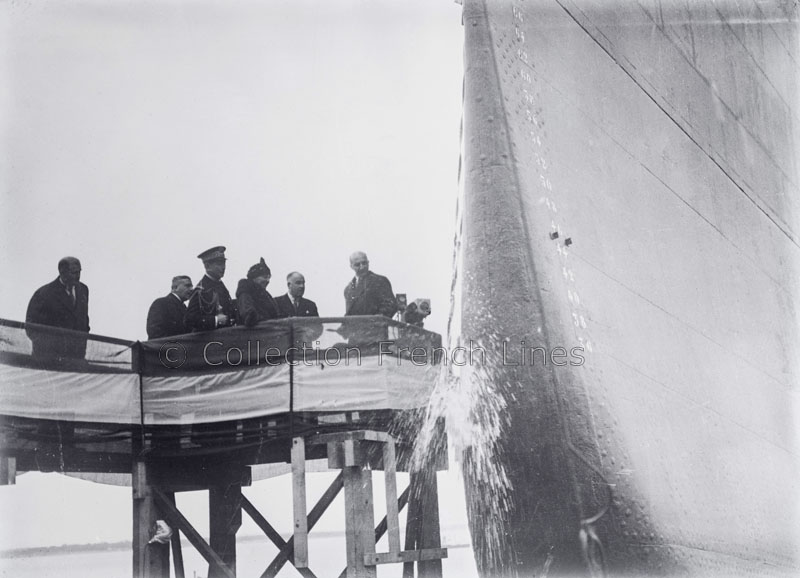
Anonymous. Christening the liner Normandie (CGT 1935), October 29, 1932
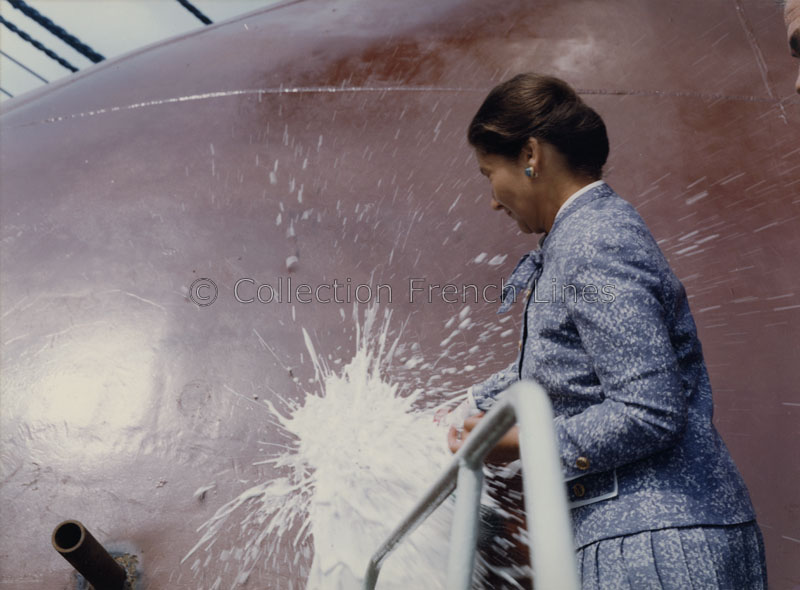
Anonymous. Christening the container-ship Gauguin (CGM 1977), October 01, 1977
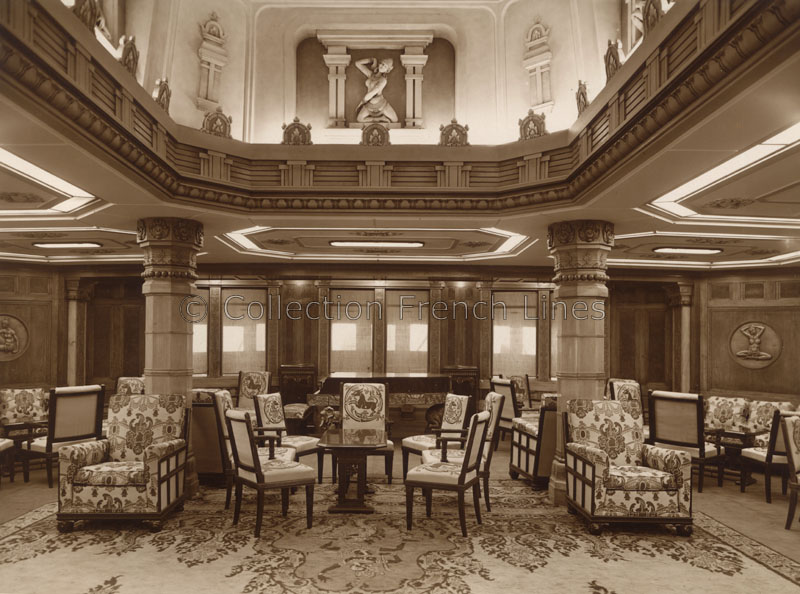
Anonymous. 1st class lounge on board the liner Félix Roussel (MM 1931)
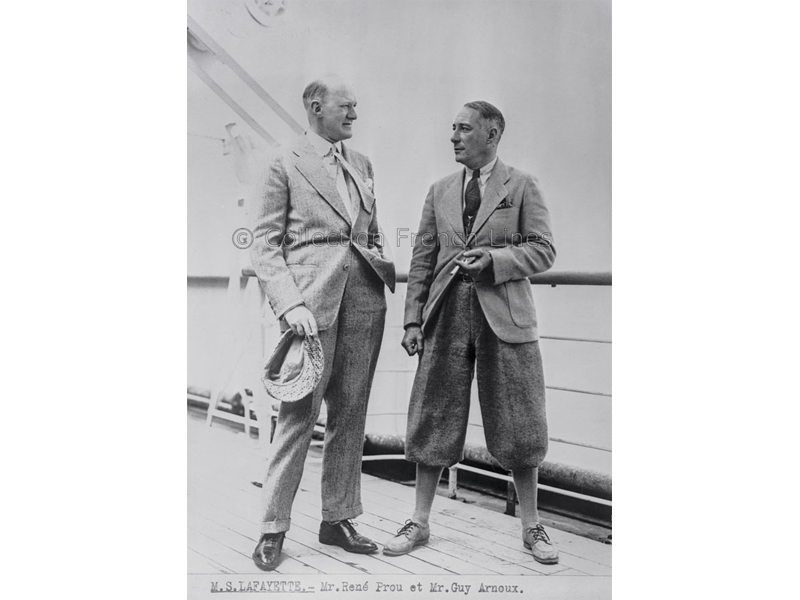
Anonymous. René Prou and Guy Arnoux on board the liner Lafayette (CGT 1930)
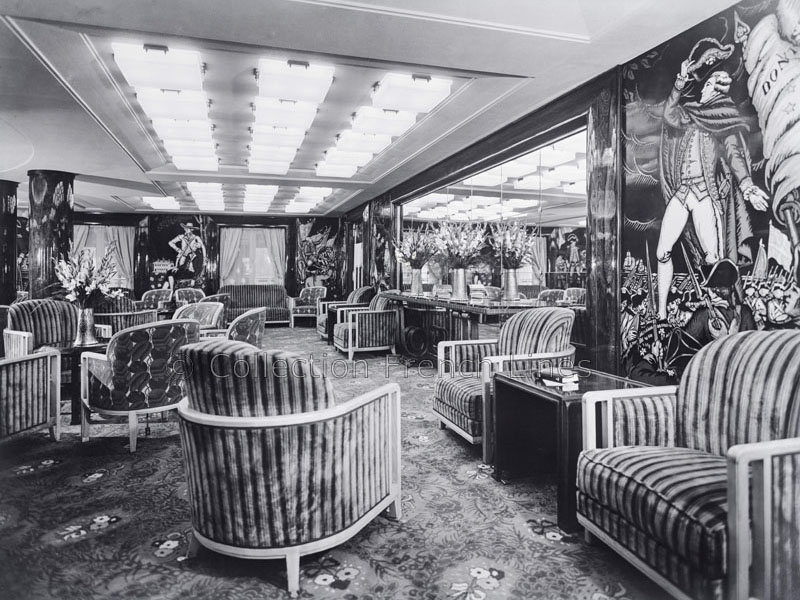
Anonymous. 1st class music room on board the liner Lafayette (CGT 1930)
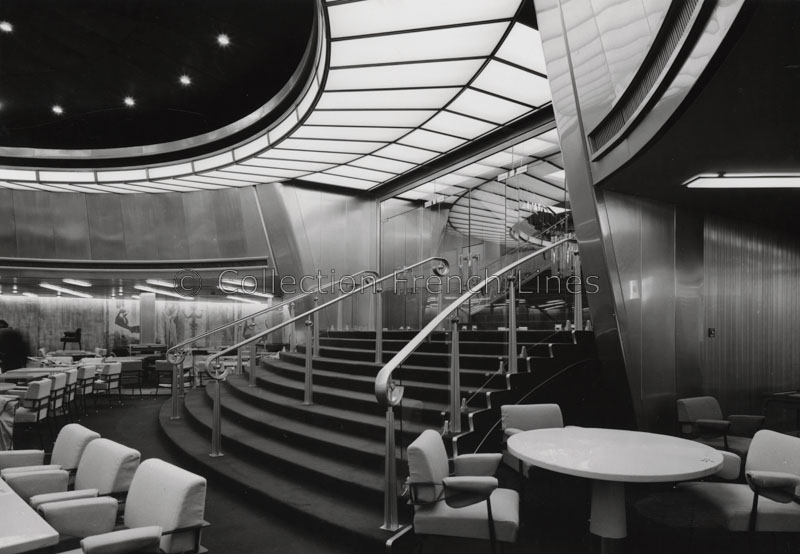
© Institut pour l’histoire de l’aluminium. 1st class dining room on board the liner France (CGT 1962)
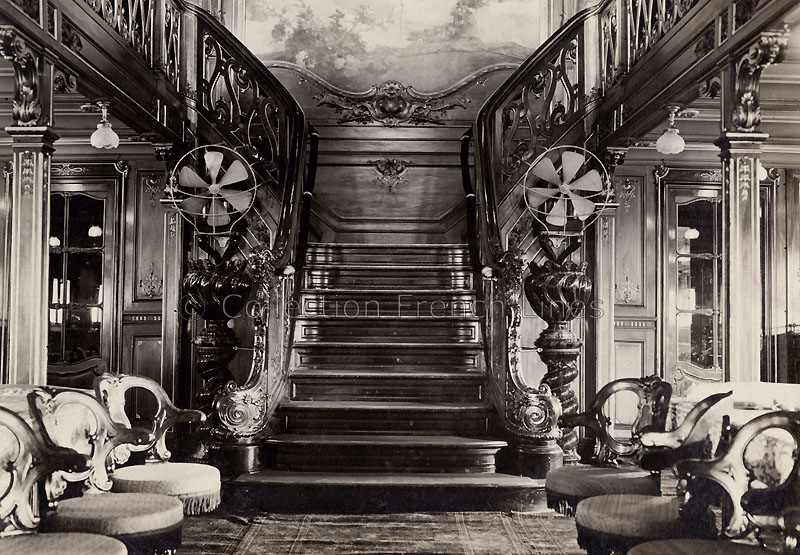
Anonymous. 1st class dining room on board the liner Armand Béhic (MM 1892)
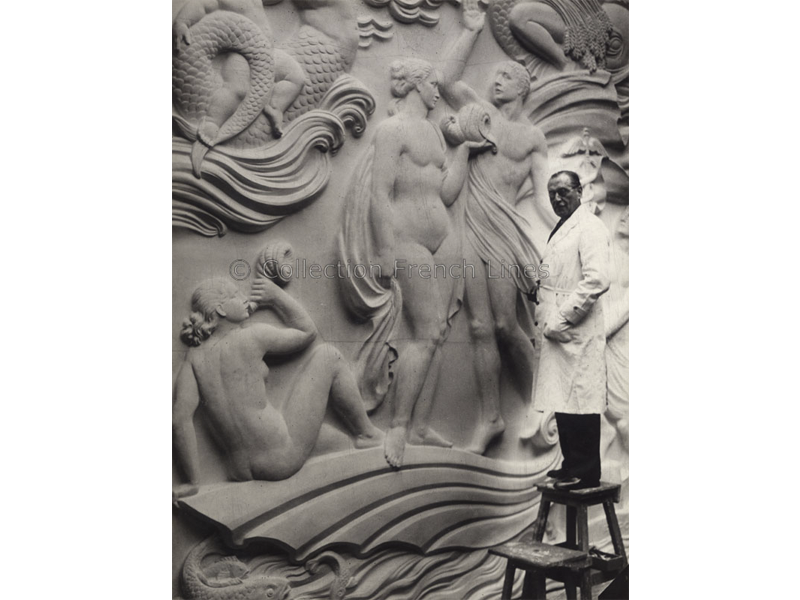
Anonymous. P.-M. Poisson beside “La Normandie Maritime” decorating the liner Normandie (CGT 1935)
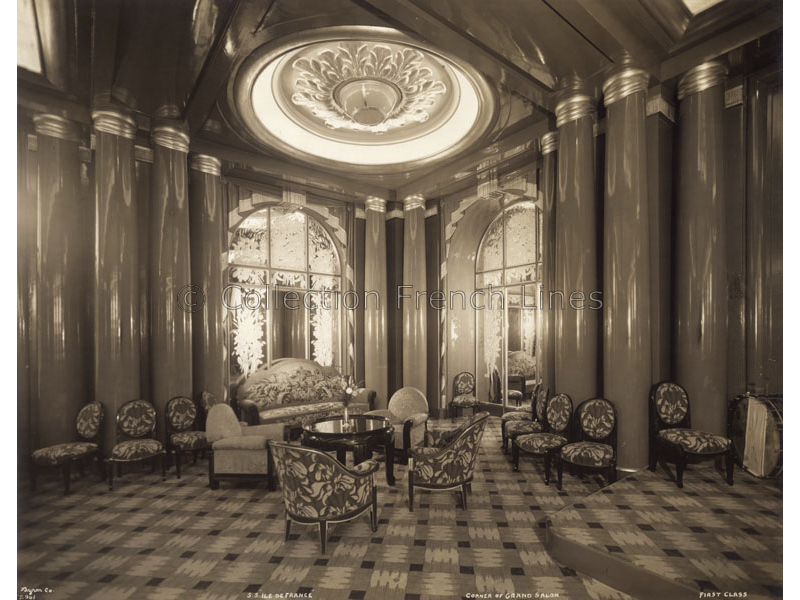
Byron Company. Main 1st class lounge on board the liner Ile-de-France (CGT 1927)
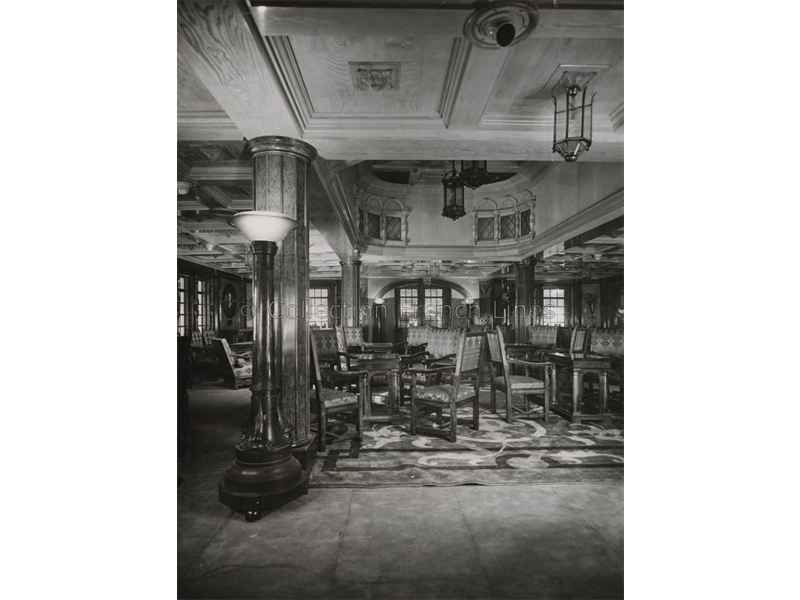
Anonymous. 1st class music room on board the liner Georges Philippar (MM 1932)
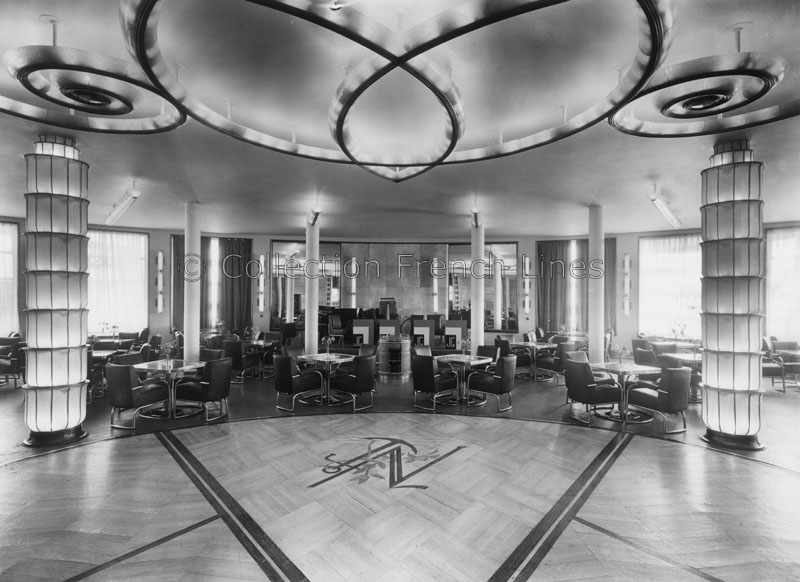
Anonymous. 1st class grill room on board the liner Normandie (CGT 1935)
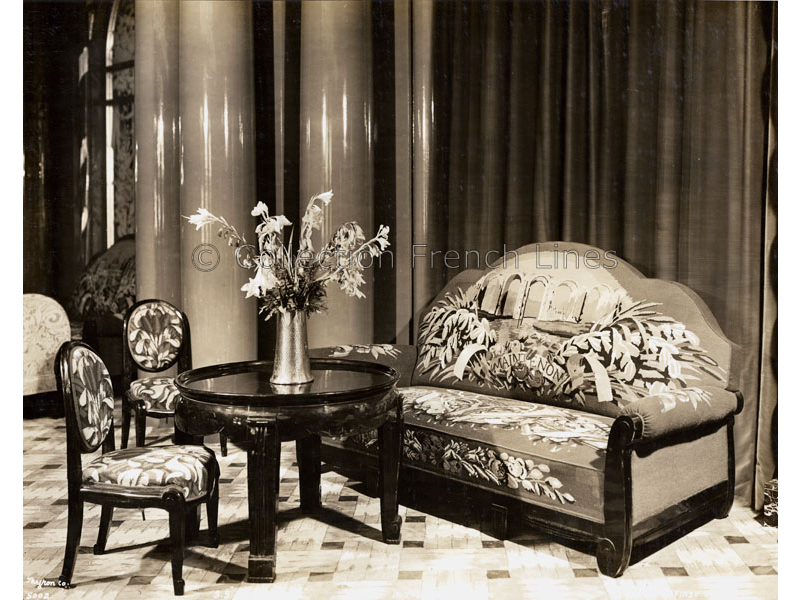
Byron Company. Furniture from the main 1st class lounge on board the liner Ile-de-France (CGT 1927)
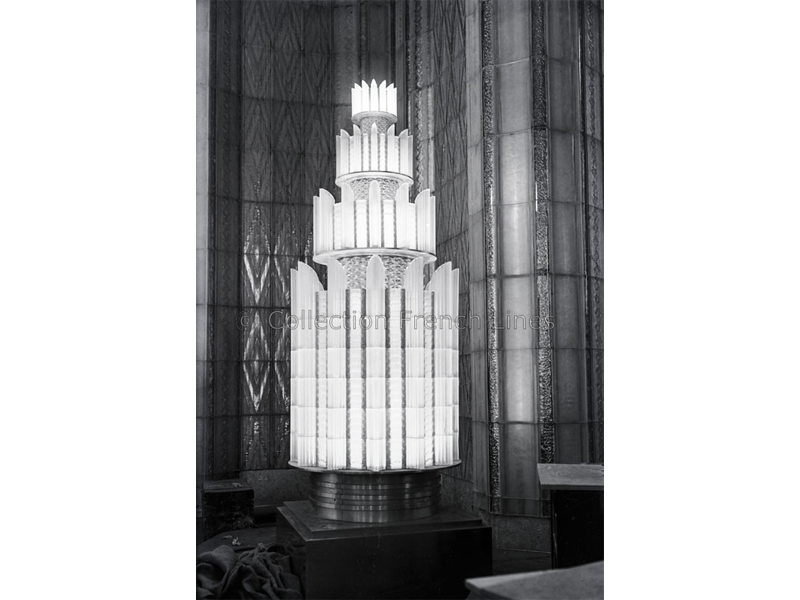
Anonymous. Luminaire by René Lalique decorating the 1st class dining room on board the liner Normandie (CGT 1935)
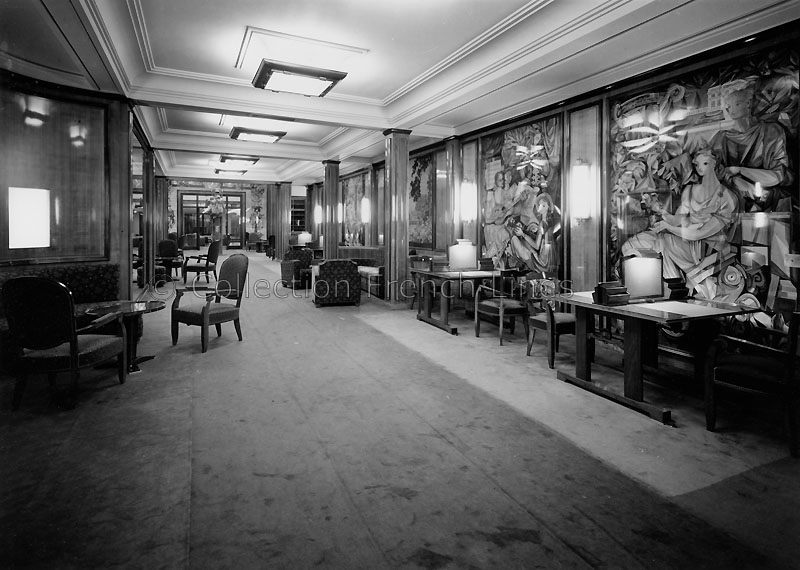
Anonymous. 1st class gallery on board the Liberté (CGT 1950)
The ship is finally completed on arrival to the fitting-out quay. Workmen busy themselves by fitting the superstructures (chimneys, etc.) and creating the on-board facilities. Once the various decks are arranged and the areas are partitioned, the plans drawn up by the architects and decorators begin to take shape. These individuals fiercely competed to be among the candidates chosen by the shipping companies and to showcase their creation as one of the most prestigious ambassadors of the sea. Many famous names left their mark on French company vessels, including designers Richard Bouwens van der Boijen, Pierre Patout and Jules Leleu, as well as renowned artists such as Jean Dunand, René Lalique and Robert Wogensky.